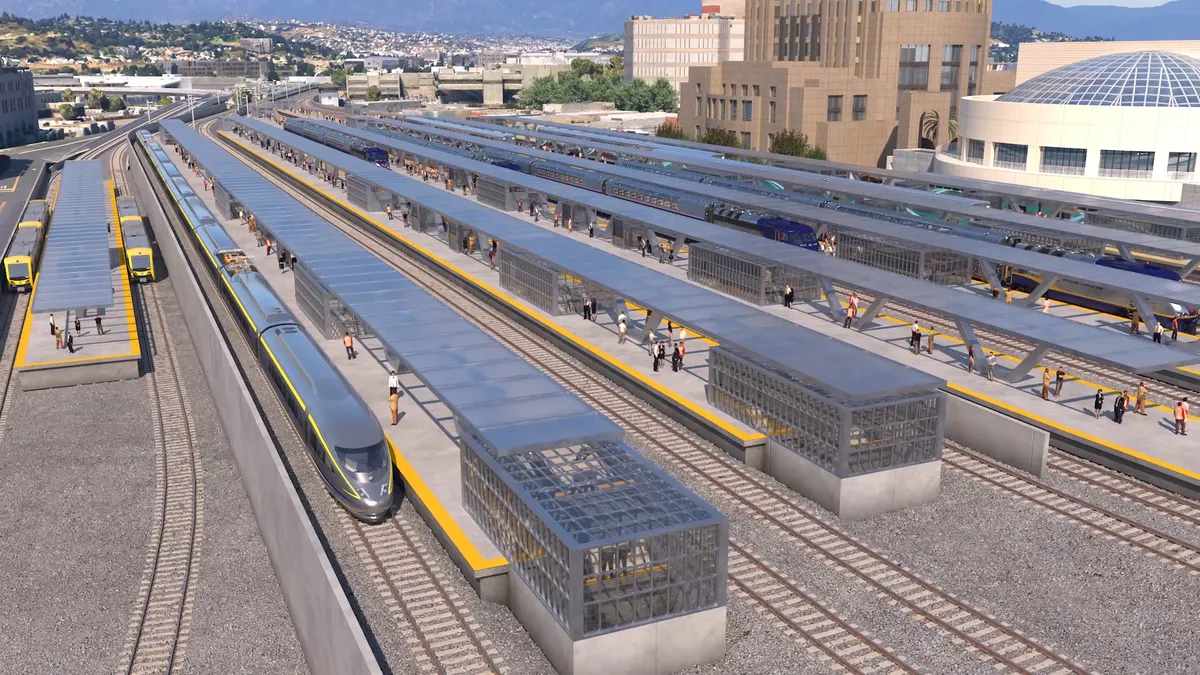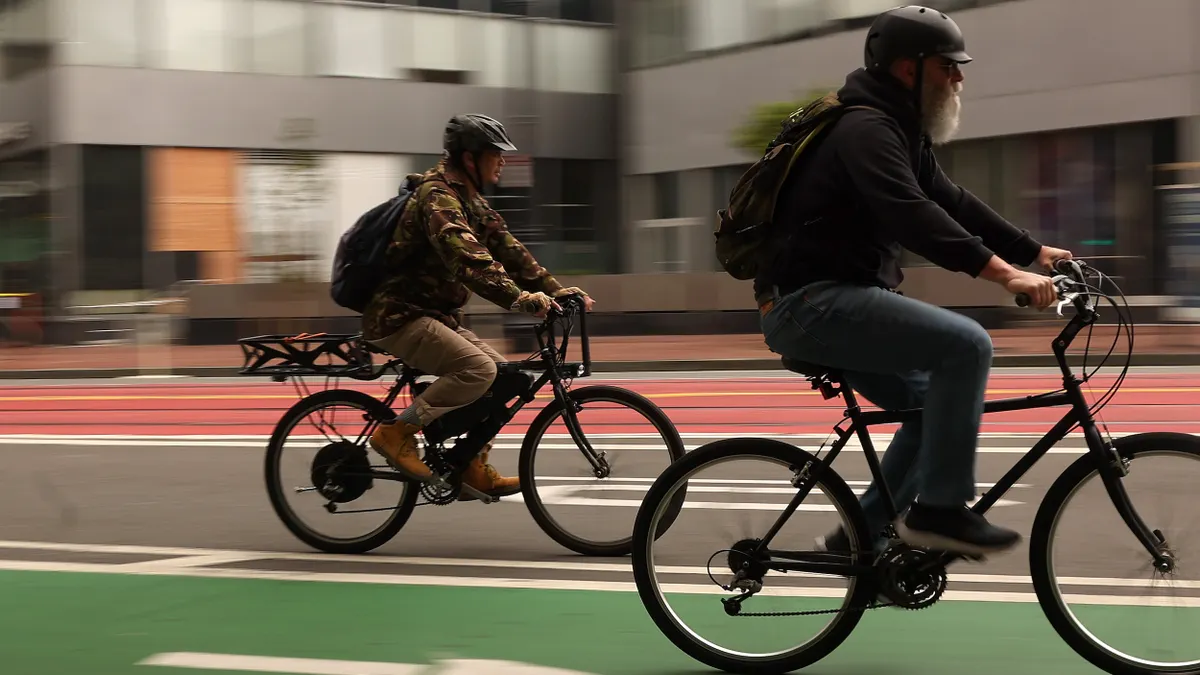Editor's Note: This piece was written by Ryan Citron, a research analyst in Navigant Research's Transportation Efficiencies and Building Innovations program. The opinions represented in this piece are independent of Smart Cities Dive's views.
The growth of urban air pollution is one of the most serious indicators of the impact of global urbanization on the environment and human health. Rapid urbanization, along with associated economic and population growth, has led to increases in vehicle use, industrial activity and energy consumption that have raised urban air pollution to critical levels. According to the World Health Organization (WHO), in 2012 about 3 million premature deaths were attributed to outdoor air pollution exposure. While much of this is happening in the developing world, it is a global phenomenon. As of 2014, about 92% of the world’s population was living in places where air quality levels exceed WHO limits.
If city officials are to fully understand and improve air quality conditions, pollutants must be accurately measured, monitored and managed. Air pollution data is becoming increasingly accessible and localized through the arrival of low-cost sensor networks and crowdsourced projects. Additionally, a wide variety of technologies and policies are being deployed to help manage air quality in cities.
The rise of low cost sensor networks
Currently, most cities measure air pollution using a collection of large environmental monitoring stations. While these stations are very accurate in measuring air quality data, their high costs (anywhere from $10,000 to $25,000 per station) can limit the number of deployments and their static nature can result in the omission of local air pollution problems. Recent advances in sensor and communications technology has led to air quality monitoring solutions that are far smaller in size, less expensive and more localized. Due to these advantages, the use of lower cost sensor nodes ($200 to $3,000 per sensor) with wireless communication systems is one the rise, filling in the gaps left by legacy environmental monitoring stations.
Sensor networks are currently taking the form of a supplement to traditional measurement stations. For example, the air quality Internet of Things network being deployed in Helsinki, Finland is being installed alongside existing air pollution monitoring stations. The sensor network will enable more comprehensive air quality coverage at much lower costs compared to adding more stations. New air quality maps, predictive air quality models and open data will be generated from the network and available to inform residents of at-risk areas.
Sensor networks are also becoming increasingly mobile, with several high-profile projects attaching sensors to moving objects such as cars and vans to provide insight on how air quality differs from street to street within cities. In Oakland, CA for example, the Environmental Defense Fund, Google Earth Outreach and researchers from the University of Texas at Austin partnered with Aclima to equip Google Street View cars with environmental monitoring sensors. The cars measured air pollution in three Oakland neighborhoods over a 1 year period. The resulting data showed that air pollution was far more variable than previously thought, often with significant changes occurring block to block.
While sensor networks offer great promise for lower cost and quickly deployed environmental monitoring, a number of challenges need to be addressed. These include the high total cost of project deployment, potential issues around accuracy and reliability, and the current inability for some sensors to meet environmental regulatory standards. As the market develops, standards and certification will be increasingly important to provide the market with certainty around the performance of these products.
Crowdsourcing
In addition to the advent of low cost sensors, an increasing accessibility of pollution data through crowdsourcing is helping to advance the air quality monitoring market. Recent consumer products such as the AirVisual Node enable users to broadcast local air quality readings into a global mapping database. Additionally, PurpleAir is collaborating with The Weather Company to provide data from its sensor units to Weather Underground (consumer division of The Weather Company), which displays sensor readings and maps on its website to provide hyper-local snapshots of air pollution in the United States.
As more people globally begin to use air quality monitors in and around their homes and workplaces, an increasing number of data points will come online, enabling more accurate and localized air pollution maps available for free to the public. The desire for localized air quality information is also expected to increase as people become more aware of the dangers of air pollution.
Air quality management
Numerous technologies and policies are being deployed to help decrease and manage air pollution levels in cities. These solutions include congestion charging and low emission zones, electrification of public transport, electric and automated vehicles, shared mobility programs, smart parking systems, and expanded bicycle infrastructure. Another rapidly developing solution offering for city pollution woes are air purification technologies. These include the CityTree from Green City Solutions, air purifying billboards and pavement, and vertical forests. As many cities lack the space for large green areas in their downtown core, building forests vertically—along with skyscrapers—has become a particularly interesting development in the effort to filter pollutants from the air. Italian architect Stefano Boeri has designed a vertical forest concept for Nanjing, China after successful prototypes in Milan, Italy and Lausanne, Switzerland. The Nanjing implementation will use 1,100 trees and 2,500 plants and shrubs to remove 25 tons of CO2 from the air annually and produce 60 kg of oxygen each day. The urban forestation project is expected to be completed in 2018.
***
With most of the world’s population living in cities where air quality levels exceed WHO limits, the need to monitor and manage air quality has become urgent. Due to the emergence of sensor networks, crowdsourcing projects, machine learning, and other advanced technologies and services, hyper-localized data is more available than ever before. Additionally, a plethora of technologies and strategies have emerged to reduce and manage existing air pollution levels and to prevent future increases. With an additional 2.5 billion people expected to be living in cities by 2050, according to the United Nations, a growing array of innovative and effective air quality monitoring and management solutions will be needed to manage the influx of people and their associated environmental impacts.

















